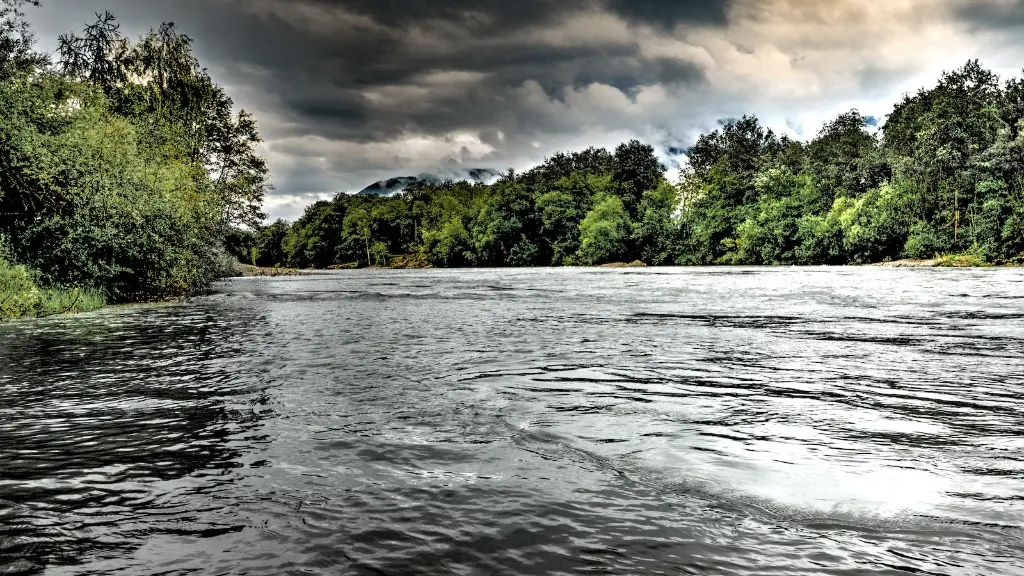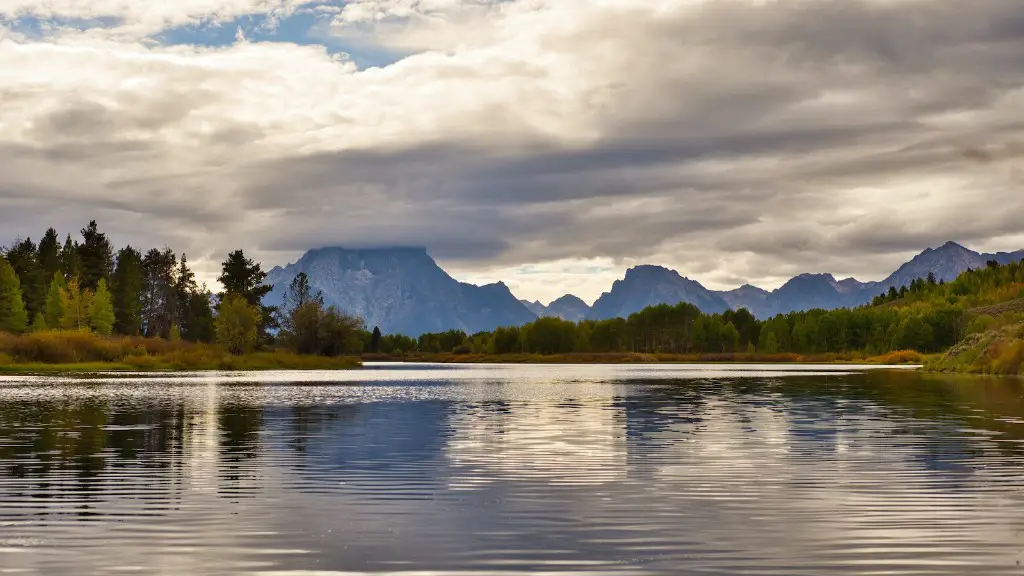Overview
The Yangtze river is the longest river in China, running for over 6,300 kilometers from the glaciers of the Qinghai-Tibetan plateau in the west of the country to the East China Sea near Shanghai. It’s been seen as the cradle of Chinese civilization, with many famous places and sites that have grown along its banks over the years.
The Yangtze has come to carry a lot of significance and importance to Chinese people, which makes the question of its location and reach particularly interesting. Here’s a look at where exactly the Yangtze river is located, and what it has come to mean to China.
Location
The Yangtze begins high up in the glaciers of the Qinghai-Tibetan Plateau, in the western part of China near Tibet and Mongolia, and flows 6,300 kilometers all the way to Shanghai, where it empties into the East China Sea. Along its path, it passes through 11 provinces and municipalities, including Yunnan and Sichuan provinces in the southwest, and Hubei and Henan provinces in the central part of the country.
The Yangtze passes through some of China’s most important and largest cities, including Chongqing, Wuhan, Nanjing and Shanghai, providing vital links for commerce, communication and transportation for the people in these areas.
Significance
The Yangtze has played a huge role in Chinese civilization over the centuries. It has been used as a source of irrigation, as a source of food, and as a trading route. In later years, it has also become an important source of hydroelectric power.
The Yangtze has come to embody Chinese culture and pride, and is seen by many as the lifeblood of the country. The Three Gorges Dam, located around the middle of the river in the city of Yichang, is a testament to the extent of human engineering and China’s technological prowess.
The Yangtze is an important tourist destination in China, and many people come from around the world to experience its beauty, history and culture. With its hundreds of tributaries, shoals and channels, the river is a unique and captivating feature of the Chinese landscape.
Environmental Effects
The Yangtze is the most polluted river in China, with a significant amount of industrial and agricultural waste being discharged into its waters on a daily basis. This has led to a designated ‘dead zone’ in the water quality near the city of Wuhan, which seriously endangers the local ecosystem.
In recent years, the Chinese government has implemented a number of initiatives to try to clean up the river, such as the Three Gorges Dam project, and the creation of nature reserves in the surrounding area. It’s clear that there is still a lot of work to be done, but the Chinese people have started to take the issue more seriously and are committed to protecting this vital resource.
Climate Change
The Yangtze is also one of the rivers most affected by the effects of climate change. The rapid melting of the glaciers in the Tibetan plateau has led to floods and droughts in the lower reaches of the river, which has had a serious impact on the local environment and public safety.
The local communities adjacent to the Yangtze have been forced to adapt to these new conditions and environmental changes, and many of the cities along the river have had to build new infrastructure to cope with the rising water levels. The Three Gorges Dam has also been crucial in controlling the flow of the water and preventing flooding.
Impact on Local Communities
The Yangtze has been a major source of livelihood for the people who live near it. Fishing and agriculture are two of the most important industries for the locals, and the river has also provided them with a vital trade route for the transportation of goods.
In recent years, the population in the area has grown significantly due to migration from other parts of the country. This has had an impact on the environment, and the local communities are struggling to keep up with the demand for basic services and infrastructure.
The Yangtze has been an integral part of Chinese culture for centuries, and is seen as an important symbol of national pride. Its location and significance make it a particularly interesting and important part of the country, and its protection and preservation is essential for future generations.
Economic Impact
The Yangtze has been a major source of economic activity in China for centuries. The river provides a vital shipping route for goods and raw materials, and its vast array of fish, plants and other resources are essential for many of the industries located along its shores.
The development of the Three Gorges Dam has had a major economic impact as well, as it has been used to generate a significant amount of electricity, and has enabled greater control over the flow of water throughout the region. In addition, the development of new ports and infrastructure along the river has encouraged trade and tourism, creating thousands of jobs and providing a boost for the local economy.
International Relations
The Yangtze is an important issue for the international community, as it provides a vital shipping route for countries in Asia. A number of bilateral deals have been signed between China and its neighboring countries in order to ensure that the usage of the Yangtze is mutually beneficial and doesn’t cause tantrums between different nations.
These agreements focus on environmental issues, such as the need to protect the wildlife and habitats of the Yangtze basin and to regulate the amount of pollution going into the river. Many international organizations are also campaigning for the protection of the river and the areas it passes through, and are advocating for coordinated action to tackle the issue.
Global Impact
The Yangtze is a global symbol and one of the most recognizable rivers in the world. Its significance and importance to China and to the world cannot be overstated. Its protection and preservation is essential in order to ensure the health of the river and the livelihoods of the people that depend on it.
Several international organizations are also working to protect the Yangtze, such as the International Union for Conservation of Nature, IUCN, which works to conserve the river and its resources. Various NGOs and international agencies are also investing in sustainable development projects in the area in order to protect the river and its resources.
Impact on Biodiversity
The Yangtze plays a vital role in maintaining the health and biodiversity of the region. It is home to a plethora of plants, animals and microorganisms, and provides a vital habitat for many threatened and endangered species.
Many of these species such as the Chinese sturgeon, the Finless porpoise, and the Chinese alligator are vulnerable to the effects of pollution and changes in water levels, and the protection of their habitats is essential for their future conservation. The Chinese government is taking steps to protect these species, and is working with international partners to ensure their safety.
Sustainable Development
The Yangtze is an extremely important resource for China, and its sustainable development is crucial for the future of the country. The Chinese government is investing heavily in projects to ensure the sustainability of the river, such as the Three Gorges Dam project and the many nature reserves they have established along its banks.
The government is also promoting measures such as eco-tourism and improving waste management practices, in order to reduce the impact of pollution and other activities on the fragile ecosystem of the Yangtze. It’s clear that there’s still a long way to go, but the Chinese people are starting to take the issue more seriously and are committed to protecting this vital resource.





